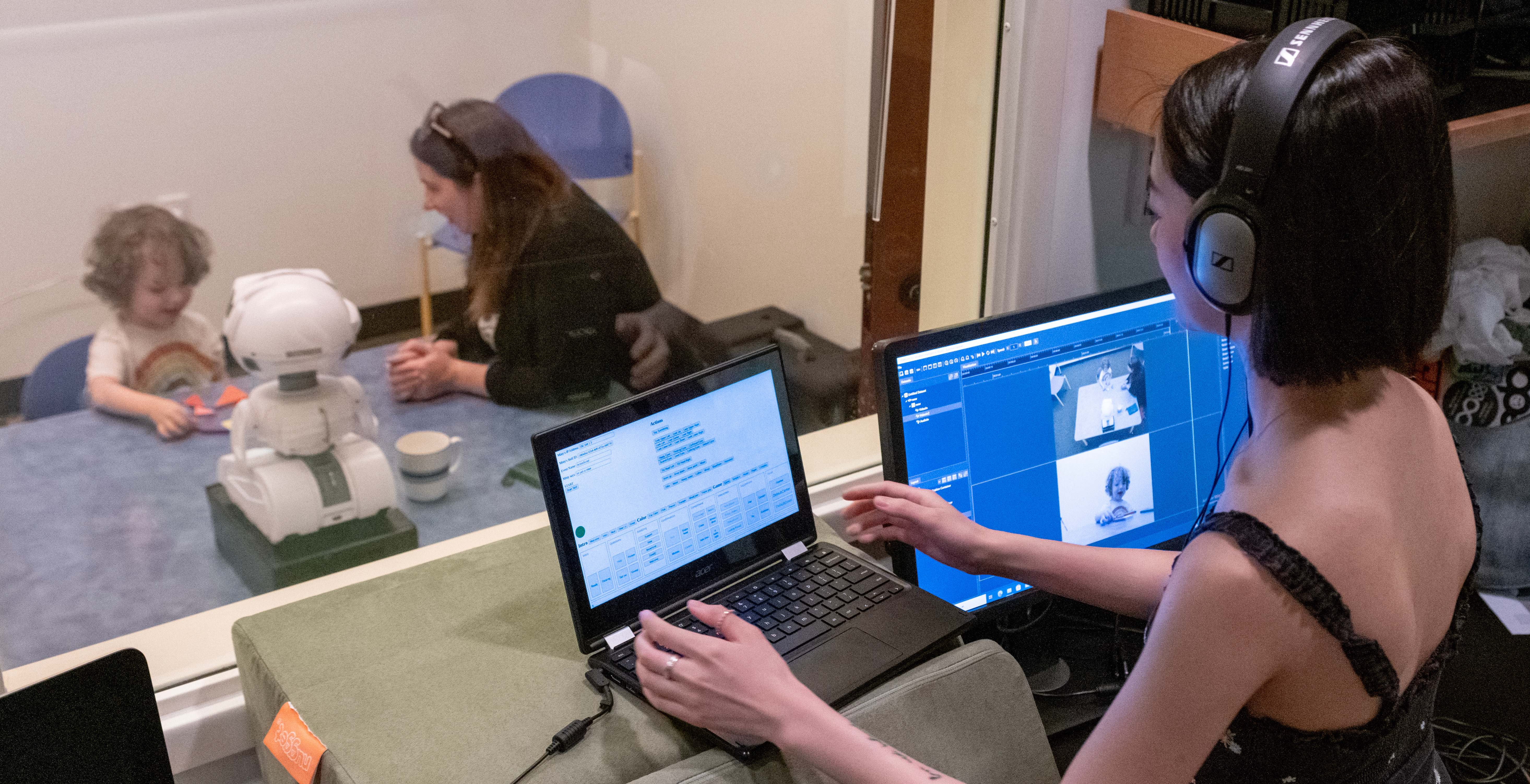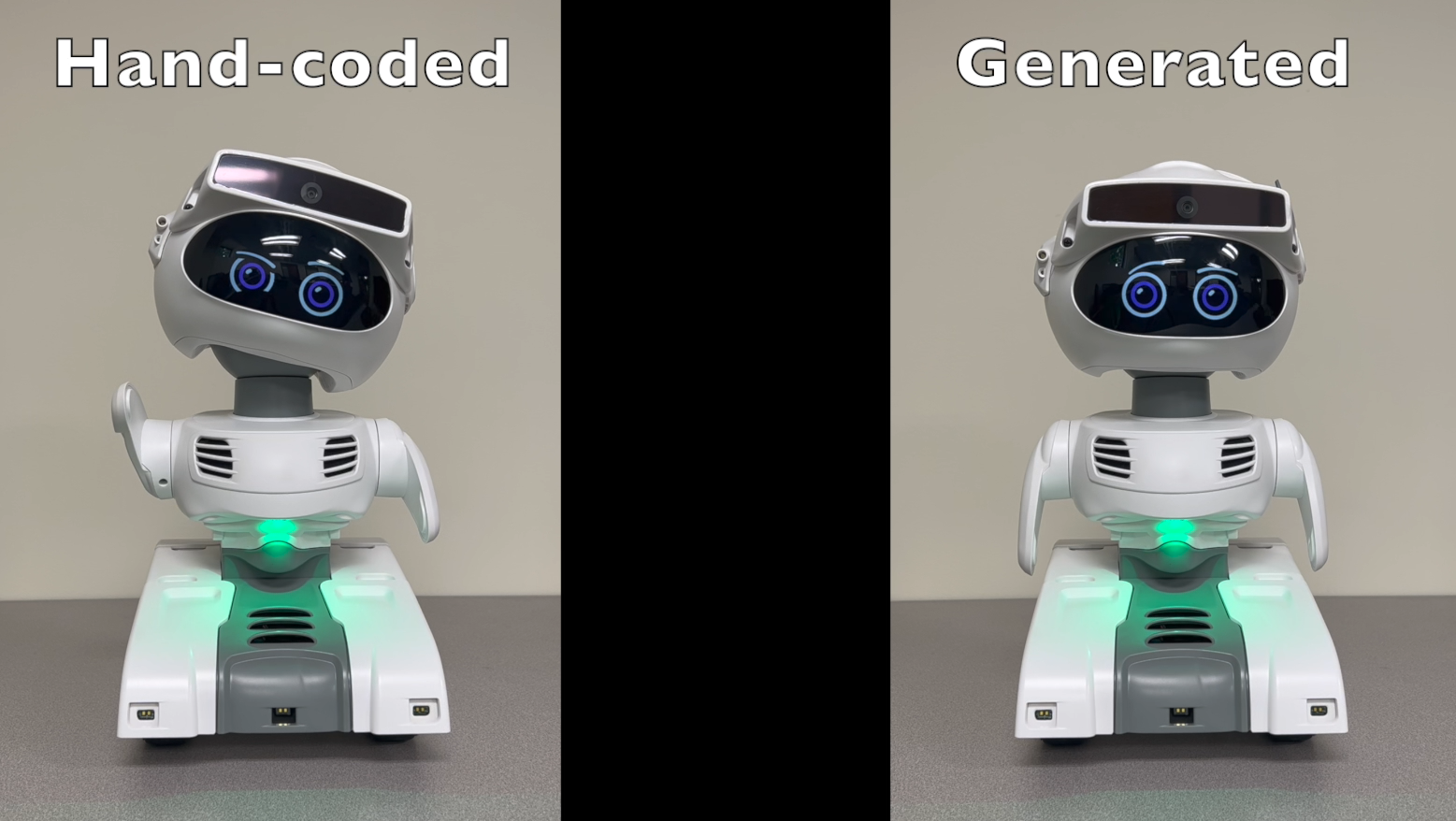Child-Robot Interaction
robots helping children
This project focuses on understanding some of the characteristics of children that affect how they interact with a robot. To explore this topics, we designed a robot that assists young children in completing a tangram puzzle. The robot gives hints and encouragement, asks questions, and cheers when the puzzle is completed. The robot is controlled by a person in another room who selects from one of more than 70 pre-programmed behaviors.

Part of this project also includes developing new methods to control the robot and author new behaviors. We are developing an approach for automatically generating multimodal assistive behaviors for social robots. Given an intent (i.e., a description of what the robot needs to communicate) and characteristics of the user and task (e.g., robot’s rapport with user, how much help the user needs/wants), we use an AI planner to generate the specific details of what the robot says, gestures it makes, and gaze patterns it uses. Our design goals are to be effective in aiding the user, be adaptive to the user’s condition, and be interoperable across multiple robot platforms. Towards these goals, we have begun to define an ontology for social behaviors (Yang et al., 2023) and a software architecture for generating similar behaviors across multiple social robot platforms (Wilson & Yang, 2024)

